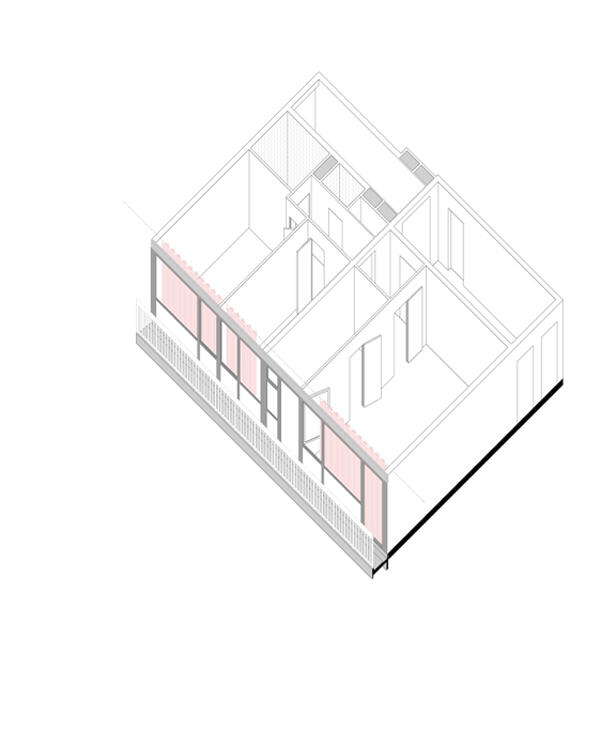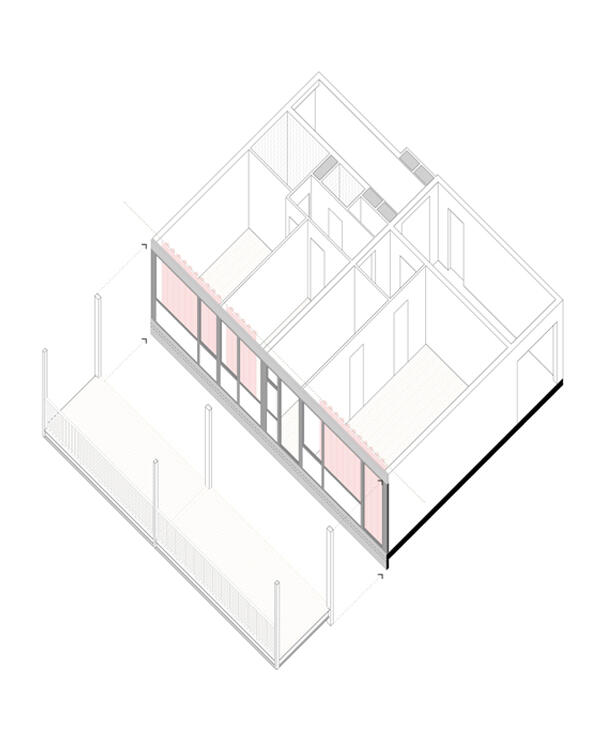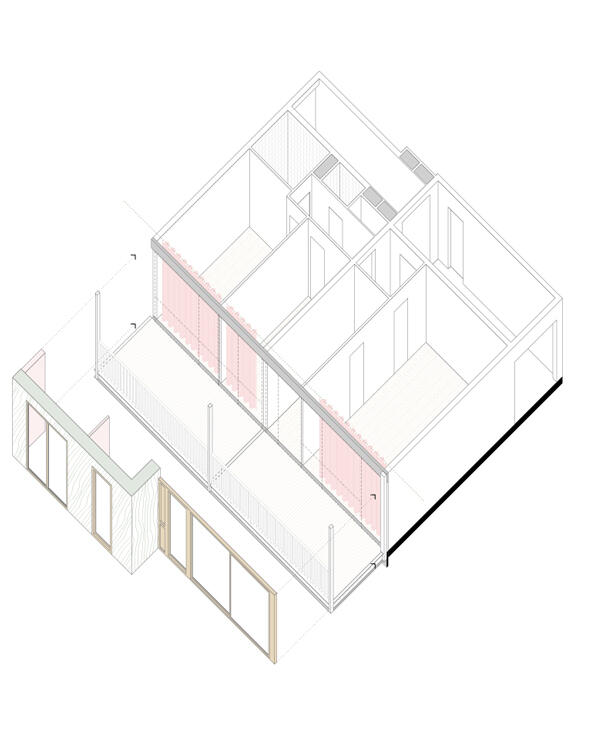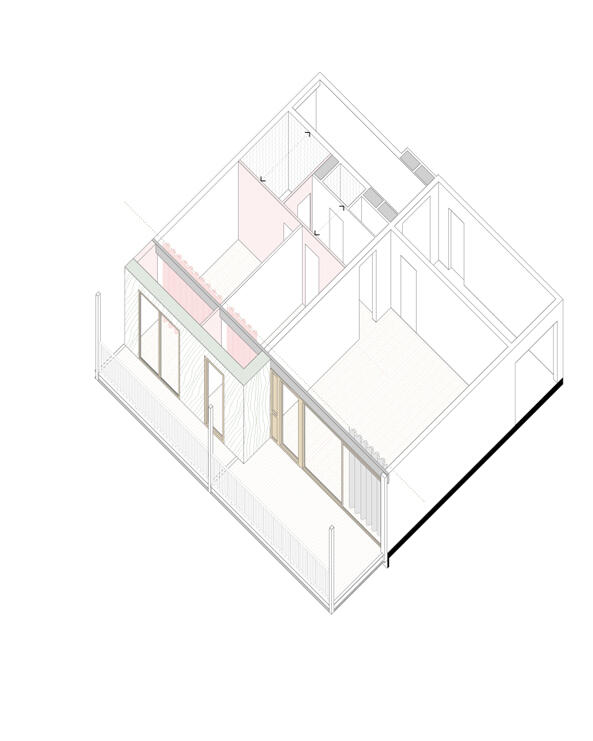358TIL
Program
Collective housing
Location
Ixelles
Date
2020 - 2027
Themes
Urban, Renovation, Public
Phase
Ongoing
Surfaces
5 339 ㎡
Team
Ney WOW, A+ Concept, S.A. Franki - Gillion Construct
Client
BinHôme
Budget
€ 10 680 000
Renovation of a residence in Boondael
Built in the 1970s on the border between Ixelles and Watermael-Boitsfort, the Tilleul social housing building is a legacy of the modernist vision of the garden city. The building is part of a diverse urban complex characteristic of the 20th-century crown of the Brussels agglomeration.
In its current state, the building and its 59 apartments do not meet all current standards of comfort, habitability or safety and suffer from various problems.
Through an ambitious renovation campaign, the project seizes the opportunity to optimise and expand the building, as part of a more global desire to densify the site to meet the growing demand for social housing.
Considering the densification of the site requires a study of all the constraints and potentials offered by the plot and the existing building.
At the same time, the energy renovation of the building and its envelope raises questions: how can the comfort and habitability of the apartments be improved? What measures would make it possible to improve the envelope of the building while retaining the components that are an integral part of its intrinsic qualities and the aesthetics of the original construction? How can this building be given a quality image and aesthetic?
Densifying while making the most of what already exists
Considering the densification of the site requires a study of all the constraints and potential offered by the plot and the existing building.
At the same time, the energy renovation of the building and its envelope raises questions: how can the comfort and habitability of the flats be improved? What measures would make it possible to improve the envelope while preserving the components that are an integral part of its intrinsic qualities and the aesthetics of the original construction? How can we give this building a high-quality image and aesthetic again?
The narrowness of the plot and its topography, the height of the neighbouring designs and the presence of an underground car park extending beyond the building are all constraints and potentials that led us to consider increasing the density by extending the building rather than by constructing yet another stand-alone structure.


A resilient renovation
All extensions to the existing building are planned in a mixed metal-wood structure. Such a structure with columns, metal beams and CLT slabs, filled with lightweight partitions, offers unique flexibility for possible future adaptation. In addition, building in this way reduces the impact on the foundations. The new building envelope is made up of prefabricated wooden boxes, offering the same guarantees for disassembly while limiting disruption during the work, as the building must remain partially occupied.




Habitability
The thermal renovation of the envelope is accompanied by a reflection on habitability.
Composed solely of walls perpendicular to the facade, the existing building stands out due to its fully glazed facade, devoid of trumeaux. It offers, in particular, single-oriented two-bedroom flats organised around a central distribution group. Widely open to the outside in a ‘seaside apartment’ style, the apartments have balconies that are too narrow to be really used. While the original apartments remain functional, the sleeping areas no longer meet current standards. Thus, the creation of a new structure with large terraces makes it possible to enlarge the rooms at the front at the same time. The resulting system of redans creates a rhythm in the background and offers a greater variety of usable outdoor spaces.





